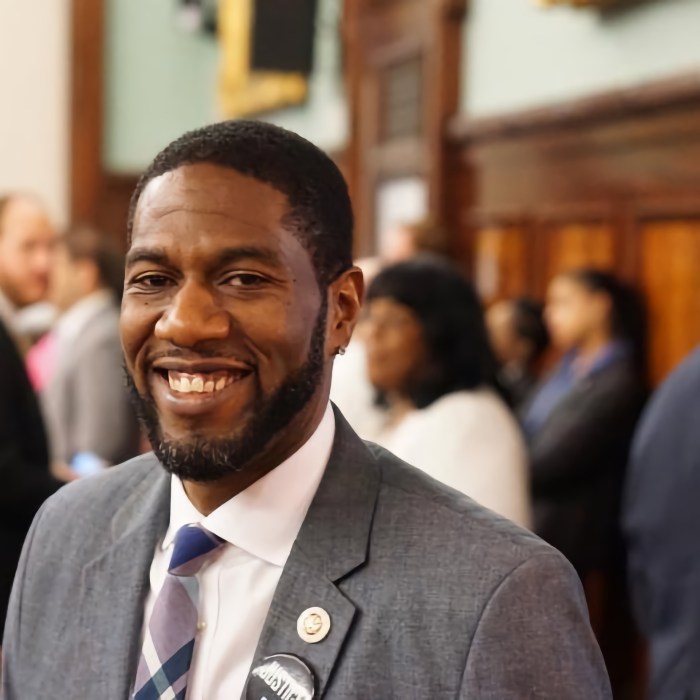On Saturday, Feb. 11, 2017, Coalition to End Broken Windows, ICE FREE NYC, The Black Alliance for Just Immigration, DRUM, ANSWER Coalition and several other grassroots organizations held a rally in Washington Square Park to challenge the city’s notion of a Sanctuary City while still employing Broken Windows policing tactics. Certain elements in the city fear letting go of this strategy for the fear that the city might slide back into the “Bad Old Days” of the 70’s, 80’s and early 90’s; when federal funding began to dry up along with the city’s manufacturing base.
Enter the 1990’s and Broken Windows policing; Bratton’s brainchild and Giuliani’s cudgel. Giuliani’s 1993 mayoral campaign was not meant to address the social issues plaguing the city for the previous 20 years, but to beat into submission those most affected by the same social conditions. Thus, “Broken Windows” was the most formidable weapon. The premise was, by targeting low-level offenders, serious offenders would be caught in the net as well. Locally, Broken Windows and Giuliani’s “stern leadership” was given sole credit for “cleaning” the city up.
The truth is, the crack era tapered off by the mid – 90’s and a robust economy helped cities to shore up their resources, especially in New York, the nation’s financial capital. Today, 23 years later with the lowest crime rate in over 50 years and rabid gentrification, Broken Windows policing has continued to be the cudgel meant to pacify black and brown communities and fare beating is the number one arrest in the city.
If we are no longer in the “bad old days”, what is the purpose of this overzealous policing tactic? Is it still necessary to criminalize someone because they can’t keep up with rising fares? Was it ever necessary? And on the other hand, how many times does a driver have to run an E-pass toll before they are arrested, if ever? Why is the penalty for jumping a turnstile much worse than running a toll? By asking the right questions you get closer to the truth. Along with relieving traffic congestion and making the outer-boroughs more accessible; one of the main purposes of the subway system was to make the working poor in New York City more mobile, both upwardly and outwardly.
Now that very system that was built for their benefit has been used against them, and grows ever more inaccessible with each fare hike. It’s no coincidence that running a toll is not criminalized and not as heavily fined when compared to turnstile jumpers. People of color in the New York Metro area are more likely to be taking public transportation versus driving, therefore criminalizing turnstile jumping inherently affects people of color and the working poor disproportionately. Moreover, not only are fare beaters in the city targeted, but specifically fare beaters in black and brown neighborhoods. I have witnessed fare beating in predominantly white areas go unanswered virtually every time it has happened in my presence. However, not only are police more focused on fare beating in Black and Latino neighborhoods, but they have even gone as far as to target those asking for a swipe from exiting riders.
The result is that 92 percent of those arrested for fare beating are black and brown, costing the city some $50 million to arrest 30,000 people a year. Furthermore, people arrested for fare beating are also at risk of deportation, one of many examples of how Broken Windows policy is not conducive with the notion of a Sanctuary City.
Fare beating is the number one cause for arrests in the city, but this cost is only a portion of a Broken Windows strategy. A PROP study revealed that when adding court costs associated with low-level arrests, Broken Windows policing costs the city $400 million a year; that’s over $1 million a day to keep an already falling crime rate down. On top of this, the mayor recently proposed a budget that allocates $275 million for a new firing range for the NYPD, more than twice the 2016 budget for the Summer Youth Employment Program.
What brings crime down? Giving teenagers from underserved communities job opportunities or making sure the NYPD has more accurate aim? My wish is for the reader to understand, that over-policing; especially in a city where crime has been falling year after consecutive year; is essentially repression. Furthermore, how can a sanctuary city expect to protect the undocumented when it’s policing strategies target those same communities and arrest them and fingerprint them for the same low-level offenses many of them are being deported for? Bear in mind, this is taking place in a climate where just having an arrest on your record is likely to have ICE knocking at your door regardless if you have a conviction or not. The city may be safe, but we cannot police our way out of social issues. An over-policed city is not conducive to a Sanctuary City and Broken Windows cannot fix a broken system.
Text BAJI to 738674 to get regular updates on Immigrant Rights and opportunities to get involved.

























